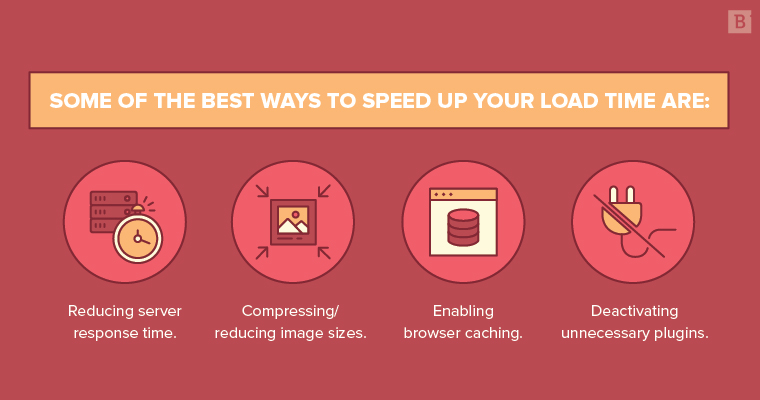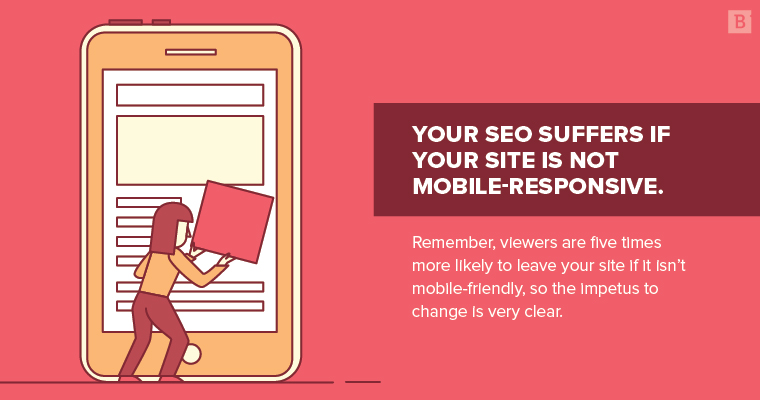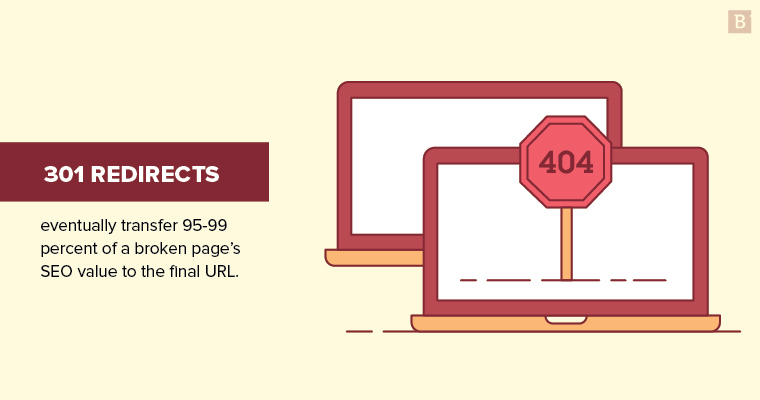You’re new to your company or new to your role. Your CEO has agreed to a short-term investment in content marketing with vague goals of “better rankings” and “better SEO.”
What he or she really means is “measurable ROI.”
At minimum, an organic marketing strategy takes six months of work before ROI materializes. But what if you only have three months?
You’ll need a series of quick SEO wins to prove to your boss that additional spend is worth the investment. In this eBook you’ll learn 10 SEO tasks to prioritize to keep your content marketing program on your CEO’s good side.

Review site health
To hit the ground running, you need to know where your site currently stands. What is your search presence, how easy is it for visitors to find you, what’s impeding customer journeys?
The only way to know is to conduct a site health check. You can use free tools to partially complete this task or you can purchase software for a more thorough investigation. Raven Tools and Moz are common options. (Google Search Console is the industry standard – and it’s free.) Better yet, partnering with an expert vendor can not only show you the errors, warnings and issues you need to fix but the methods in which to fix them as well.
A clean, crawlable site illustrates to search engines that you’re an attentive webmaster. Plus, once your site is healthy, you can draw a straight line demonstrating your enhanced SERP rankings – and CEOs love straight lines.
Set up goal values in Google Analytics
This isn’t a trick question: How can you show wins on your site without having proper goals set up in Google Analytics?
Goal values allow you to set parameters for your goals and populate GA reports with the data you actually need. Under the Admin page, click on “Goals,” then “+ Goal.” All you have to do is enter the the value of that goal for each goal type.
If your goal is five new leads per month, then GA will report data in relation to that goal, letting you know whether you’re falling short or you have succeeded.
With these before-and-after findings, you can track visitors’ journeys to determine why they aren’t fulfilling your goals and what you can do better to improve their user experience.
Regularly updating and tracking goal values allows you to definitively know how much each lead is worth, or, depending on your goal type, how much each click, download or impression brings to your bottom line.
Improve site speed with simple fixes
Once you’ve audited your site for better search visibility, you should also have a clearer indication of what your site speed looks like. One of Google’s primary ranking factors is user experience, and page lag times are universal turnoffs that feed into UX signals.
The optimal site speed should be less than 1.5 seconds. Just a 1-second delay in loading time leads to a 7 percent loss in conversions and 11 percent fewer page views – it’s that important.
Some of the best ways to speed up your load time are:
- Reducing server response time.
- Compressing/reducing image sizes.
- Enabling browser caching.
- Deactivating unnecessary plugins.
Once you’ve cleaned up some of these site errors, UX and SEO signals should improve.
Raven Tools, GTMetrix and Google Pagespeed Insights are go-to resources on this front.

Optimize for mobile
With GA set up, you’re able to see the level of traffic that comes from desktop and mobile. In 2017, we reached a “mobile tipping point”: Mobile devices were the primary tool for the majority of minutes spent online globally.
There’s no way around it: Your SEO suffers if your site is not mobile-responsive. Additionally, in 2016, Google switched to mobile-first indexing, meaning you quite frankly cannot win SERPs without great mobile UX. To do this:
- Enable Accelerated Mobile Pages (AMP) for blogs.
- Separate mobile and desktop URLs.
- Move to Responsive design.
- Remove interstitials.
Remember, viewers are five times more likely to leave your site if it isn’t mobile-friendly, so the impetus to change is very clear.
Use Google’s Mobile-Friendly Test to get on the right track.

Format structured data
Structured data is an on-page markup system that allows search engines to understand your site, how it’s formatted and how it should be displayed to users. Google has a dedicated Structured Data Markup Helper to assist in this process so that all metadata, microdata and schema markup are organized in a way that maximizes search visibility.
Through structured data, you’re able to win rich snippets, answer cards, knowledge graphs and a host of other “Position 0” SERP rankings. By adding this extra layer of back-end context, you’re more likely to enhance click-through rates and reduce bounce rates.
Attack low-hanging search opportunities
Going head to head with larger companies who already own high-traffic keywords is not a recipe for success, especially if you’ve got time working against you. Instead, identify several long-tail keywords that are less competitive.
Keyword platforms like Moz, SEMrush or MarketMuse (in addition to Search Console and GA) grant you insight into what these keywords are and how likely you are to rank for them. Think of these as low-hanging SERP fruit – opportunities that don’t require a lot of investment yet can show tangible ranking results very quickly.
Ensure your keyword list includes phrases that hint at commercial intent and high relevance to your industry or service.
Fix 404s and duplicate content
Common site errors that significantly hurt SEO value are often easily avoided if you take the time to correct them. A 404 error page, for instance, drives up your bounce rate and is probably the worst customer experience any site visitor will have when landing on your site.
Search Console and Screaming Frog are standard site crawling tools that can shine a light on 404s and help you redirect traffic to a proper page.
Duplicate content is another issue that plagues outdated sites or new sites that are hosting migrated content from disparate sources. Google is confused by duplicate content, as it makes it harder for the search engine to analyze which of your web pages is the correct one to serve. Create an entirely new URL for all unique content and use 301 redirects to improve traffic flow.
301 redirects eventually transfer 95-99 percent of the broken page’s SEO value to the final URL.

Refresh top-performing landing pages
Take a look in GA to see which of your landing pages is already performing well. If a given page is generating conversions at a higher rate than other landing pages, then you essentially need to double-down.
Funnel blog traffic to this high-performing page by updating it with CTAs and internal links that route visitors directly toward higher conversion potential. One easy way to better understand which pages to optimize is to select “Reverse Goal Path” under the “Conversions” and “Goals” dropdown.
This enables you to see the exact path visitors who converted took. Optimize each stage in this sequence so that the rest of your site traffic can follow a similar trajectory.
Create Google My Business listing
Google’s local search listings position you to appear at the top of SERPs along with key information about your company. In fact, you actually rank above the first organic listings on page one if you’re local to the searcher.
Create or update your Google My Business account so your name, address and phone number are consistent across all your web pages. If there are any discrepancies between what’s used on Google My Business and your site, it can hurt your ranking potential.
Local SEO is becoming more important as search engines prioritize results that align with natural language and geographical search behavior, so don’t miss out on this key opportunity.
Reclaim unlinked site mentions
Link equity and link authority are prominent factors that affect SEO. But if your site is littered with broken links or your brand is being mentioned without attribution, you’re losing out on potentially lucrative authority signals.
First, conduct a site crawl to track down all broken links and set up 301 redirects to the right pages. Secondly, set up a Google Alert that notifies you whenever your company name is mentioned on the web.
Click on these sources to see if they are linking back to your site as well. If not, reach out to the source or their webmaster to gain a link attribution. This will help drive more traffic to your site, impacting SEO.

Conclusion
With no time to waste, SEO can be a cost-effective way to produce content marketing results. Luckily there are plenty of tools that can support you in the process. Heck, you might actually spend more time putting together your three-month presentation deck than it took to address some of these SEO issues.
Once you’ve made a strong impression, don’t stop there.
Content marketing is a long-term investment, and now that you’ve got your foot in the door, it’s time to segue into a more consistent and quantitative marketing model.
That’s when the fun really begins.






